Spray roses: features, varieties and care rules
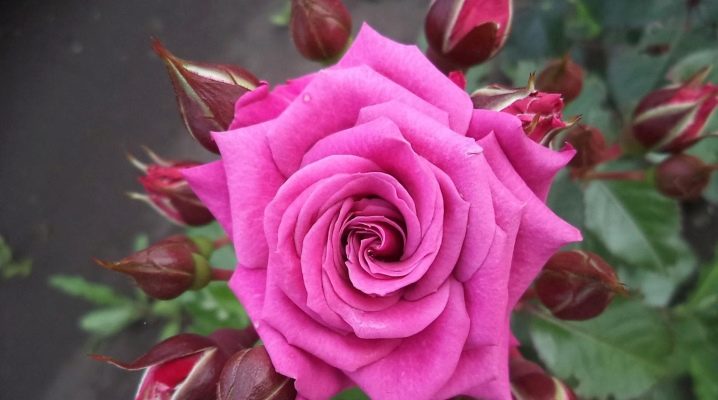
The rose is the most popular and beloved representative of flowering plants, which can be seen not only in flower beds near private houses, but also in flower beds in city parks and various public recreation areas. The high popularity of this plant has forced breeders to work on the development of new varieties. They have a wide range of colors, as well as high resistance to various diseases and unfavorable climatic conditions.
One of the most recent advances in breeding is the rose spray. The new plant quickly gained a leading position in the sales ranking of this group of products due to its high aesthetic parameters and undemanding agrotechnical measures.
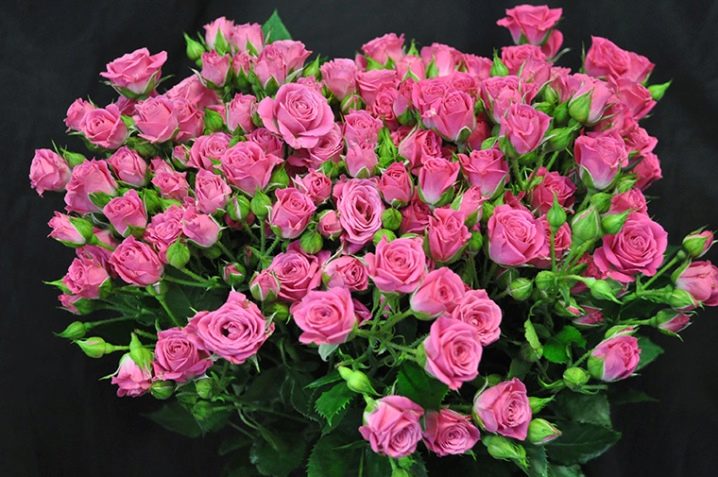
What it is?
Rose spray (pink spray) is an innovative development that arose as a result of the joint work of professional botanists and breeders in the XX century. The second name for the flowers is patio roses. Small flowers are very popular with florists who use them to create wedding and holiday arrangements and bridal bouquets.
Distinctive features are the small size of the bush, the maximum plant height is no more than 80 cm, the formation of more than 9 buds on one branch. Peduncles can be both large and medium, and small, the diameter of which ranges from 3 cm to 8 cm.
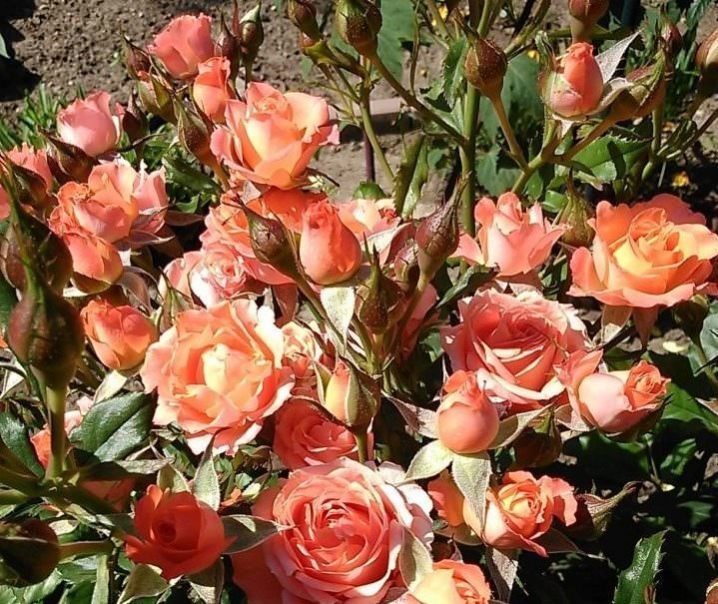
The main advantages of this plant:
- massive fruiting over a long period;
- unpretentiousness;
- resistance to low temperatures and adverse climatic conditions;
- lack of thorny thorns;
- the last formation of peduncles in late autumn;
- the presence of a delicate aroma;
- the ability to grow in flowerpots and flower containers.
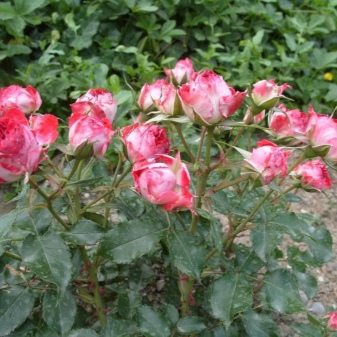

The best varieties and their characteristics
In specialized nurseries, you can see a large assortment of spray roses, which differ both in color and in the shape and size of the bud.
The range of the most common shades:
- Red;
- Orange;
- White;
- cream;
- pink;
- citric;
- yellow.
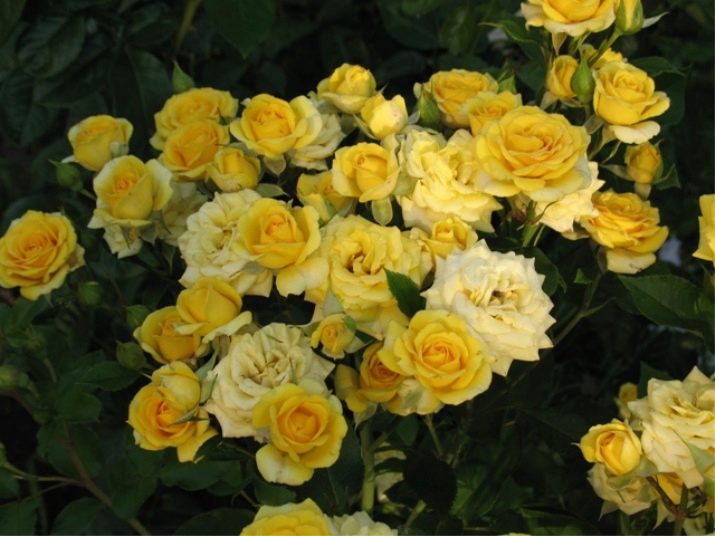

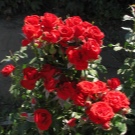


There are other color shades that are sure to surprise even experienced gardeners.
Representatives of pink and cream roses are the following types:
- Lovely Lydia;
- "Yana";
- "Memi Eden";
- "Barbodos";
- Deep Waters;
- Hiho Spray;
- "Evelyn";
- "Grace";
- Lankom;
- "Bonika";
- "Satin";
- Lidelaike;
- Pinks Intuition;
- "Jessica";
- "Victoria";
- Gloreus.
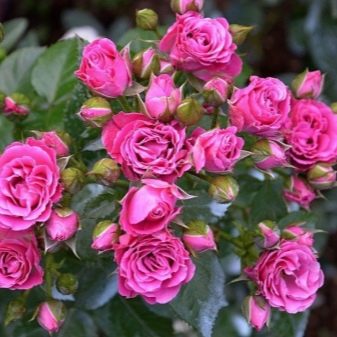
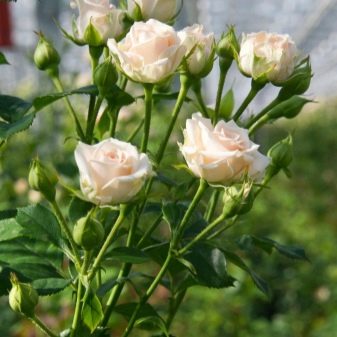


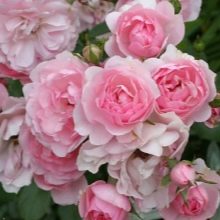
The following types have become bright representatives of orange and yellow varieties of spray roses:
- "Mandarin";
- "Sphinx";
- Fire Flash;
- "Kelly";
- "Samba";
- Samer;
- "Clementine";
- "Hit";
- Macorena;
- Sant City;
- "Orange spray";
- "Alegria";
- Orange baby;
- "Jazabel";
- Ryzn Shine;
- "Rumba";
- "Typhoon";
- "Zorenka";
- "Tibet".
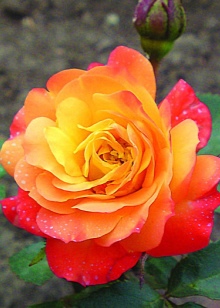
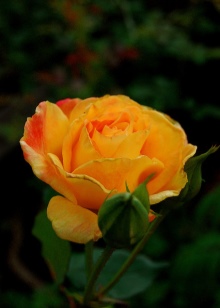
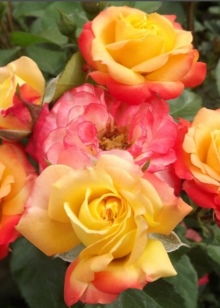
Red roses include the following types:
- "Tomango";
- "Natalie";
- “Midget;
- Leili Flirt;
- Mikado;
- Baby Bakara;
- "Mirabel";
- "Black Jack";
- Cherie Folies;
- "Rubicon".

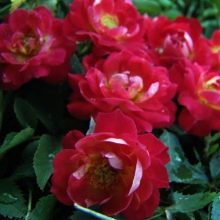
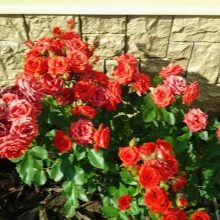
Less popular are the multicolored varieties - "Papl", "Princess", "Kent", "Drop", "Abracadabra", "Orion", "Bordeaux", "Tiramisu".
Particular attention should be paid to the description of the most demanded representatives of this flower.
- Lovely Lydia - a Dutch plant whose height is less than 75 cm, and the diameter of the bush reaches 55 cm. The color range of the buds ranges from raspberry to pale pink. The main feature is the presence of a dark core. The size of the buds leaves about 3.5 cm. Advantages - long and massive flowering, high resistance to low temperatures and the most common types of diseases, spectacular appearance.
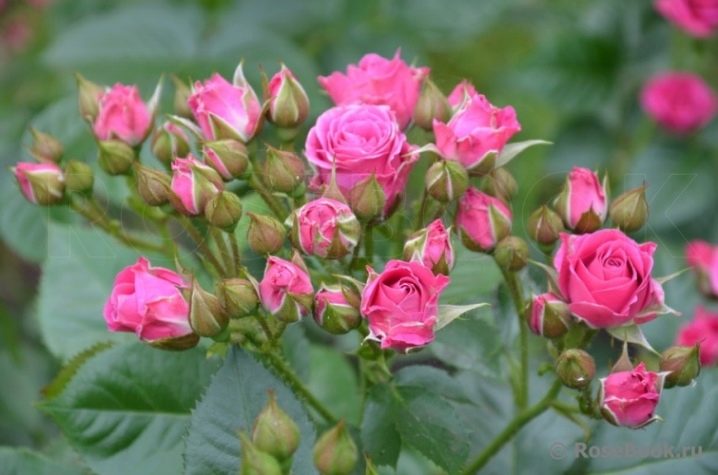
- "Fire Flash" - a bright variety, the color of which resembles fire. On low bushes, yellow buds with orange spots grow, the size of which does not exceed 3.5 cm. This variety is one of the most popular among florists and designers.
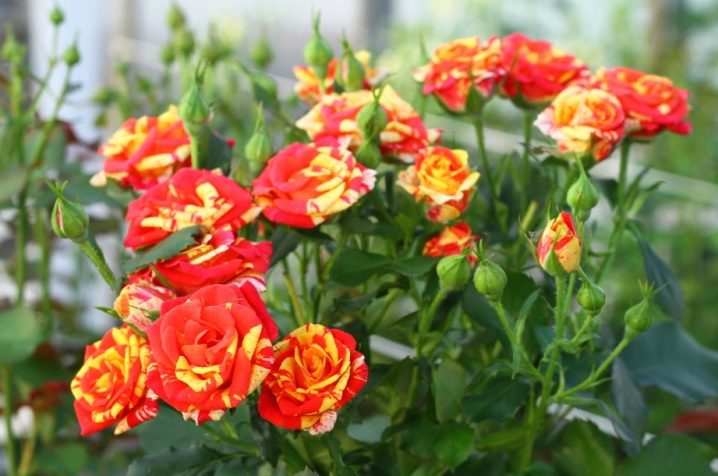
- "Yana" - a decorative representative of the family of roses spray, the maximum height of the bush of which is 55 cm. Advantages - compactness, the presence of an elusive and delicate aroma. Scope - decorating borders and balconies.
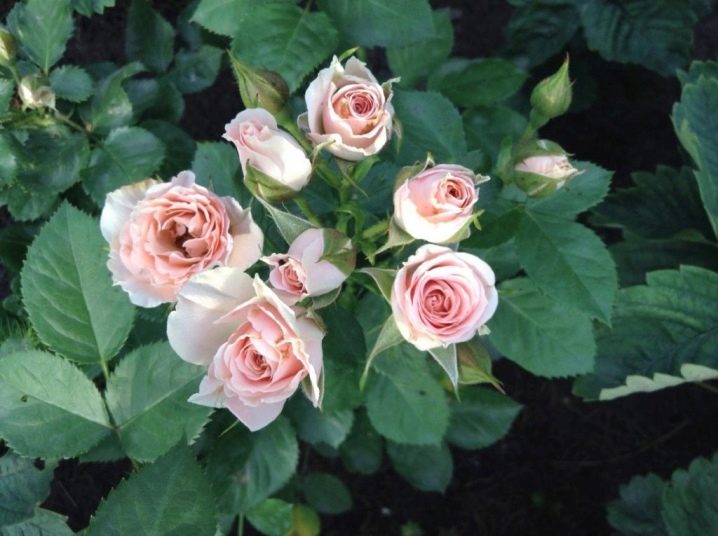
- "Rumba" - a colorful flower that has a deep yellow tint with pink and crimson highlights. The number of flowers on one shoot is 15 pieces. The color of each bud is unique and unrepeatable.

- "Hiha Spray" - abundantly flowering plant, the number of bright pink buds, their number can reach 20 pieces. The height of one bush reaches 100 cm.
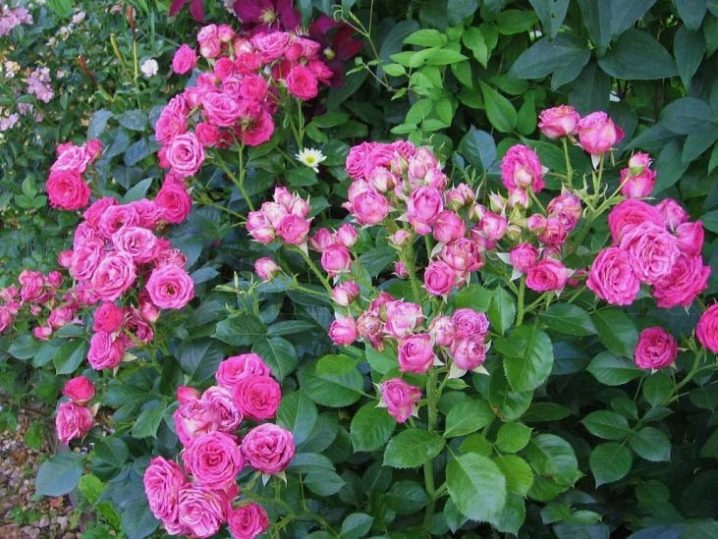
- "Tomango" – small plant with large velvet flowers. The main feature is color preservation even under the scorching ultraviolet rays of the sun;
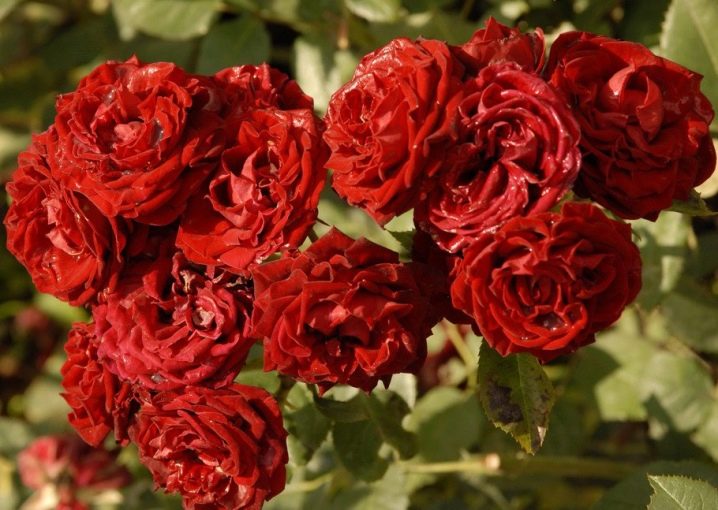
- "Black Jack" - a spectacular bush, the number of buds on which can reach 30 pieces. The petals have an openwork structure and are indispensable for making bouquets.

Landing rules
Rose spray is an unpretentious type of ornamental plant that does not require special attention. To get beautiful flowers, experienced summer residents recommend using the secrets of plant care and reproduction.
Selection and storage of seedlings
The correct choice of seedlings is the key to obtaining a strong and beautiful plant. Plants packaged in plastic bags with a nutritious soil mixture and with an open root system are going on the mass sale. Breeders recommend giving preference to the first type of flowers.
Signs of a healthy plant:
- strong root system;
- lack of mechanical damage;
- lack of dry branches and signs of fungal disease;
- the presence of a pleasant earthy aroma and loose soil in the container;
- the presence of live white shoots at the ends of the roots.
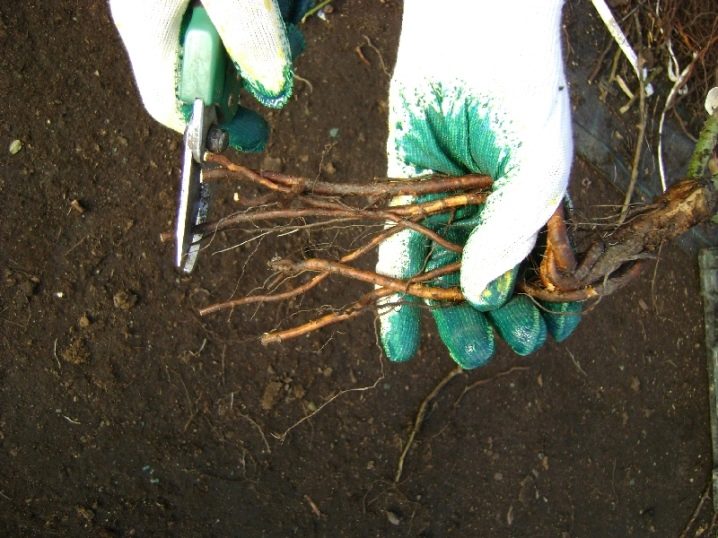
Before planting, it is imperative to prune the planting material, during which buds, dry branches and damaged stems are removed. The maximum number of eyes should be 5. The cut points must be treated with garden varnish.
Placing seedlings in water with sodium humate overnight is a prerequisite before planting.
Disembarkation time and place
The choice of a planting site for your favorite plant depends on its variety. For some species, the most favorable places for growth and development are sun beds, and for others, places with partial shade, where the buds will always have juicy and rich shades.
The planting process consists of several main stages:
- formation of a landing pit with a diameter of 50x50;
- laying a drainage layer, for which it is necessary to choose river sand and fine gravel;
- the formation of a nutrient layer, which consists of fallen leaves, humus, manure and organic fertilizers;
- placing a bush in a prepared hole;
- backfilling the plant with earth while compacting the soil around the stem;
- abundant watering of the bush with clean water at room temperature in the amount of 10 liters per planting hole.
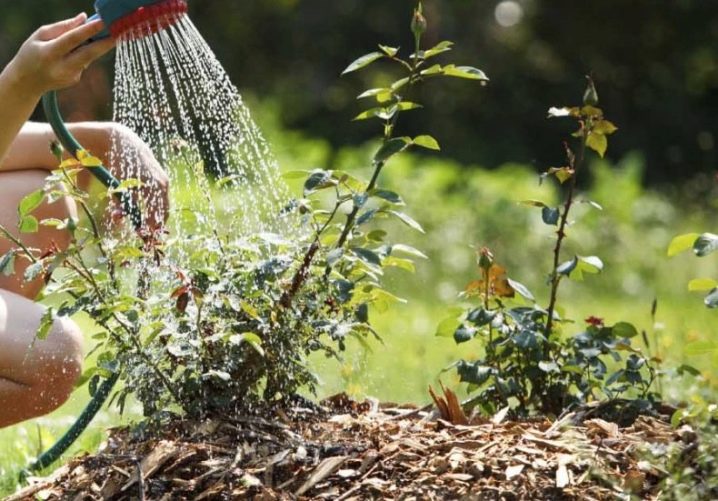
If the planting is planned for the fall, then from the summer it is necessary to actively prepare the land in the flowerbed.
Basic recommendations for preliminary preparation of the landing site:
- cleaning of weeds and their root system;
- digging the site with overturning the soil coma;
- digging the necessary trench;
- mixing the top fertile layer with mineral fertilizers and placing the mixture at the bottom of the pit;
- keeping the planting pit for several months.
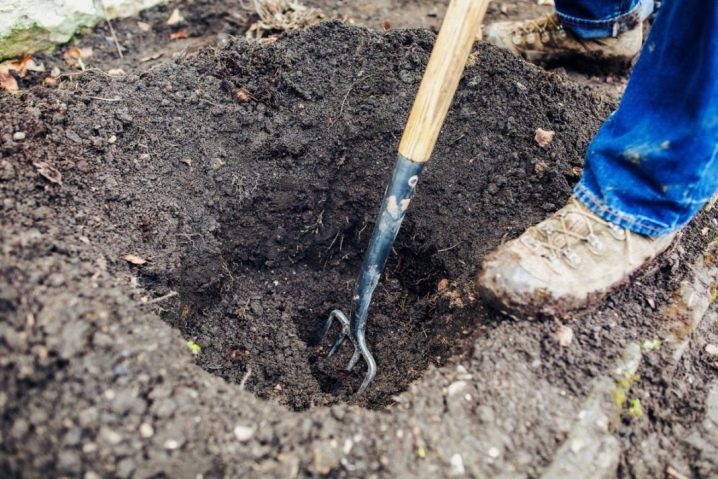
If planting is planned for the spring, gardeners recommend simply digging up the site and adding fertilizer to the ground. By the arrival of spring, the soil will be enriched with minerals and for planting it will be enough just to dig a hole of the required size.
Before forming a flower bed, one must take into account the type of plants that grew in front of the roses. Quince, cherry and hawthorn will have a negative impact on the rose garden. To create favorable conditions for the growth and development of flowers, it is necessary to replace the topsoil.
To normalize the acid balance, ash should be added to acidic soil, and humus, compost and needles should be added to alkaline soil.
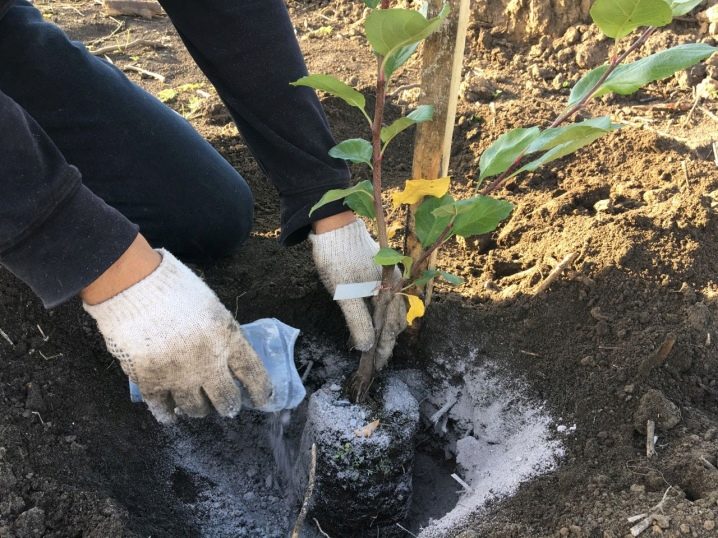
How to reproduce?
To obtain new plants, breeders distinguish several methods of reproduction:
- seminal - growing seedlings from harvested seed material;
- rooting of branches - digging in the lower branch of the mother bush to form the root system of a new plant;
- root suckers - separation of young plants with developed roots from the main bush;
- grafting - cutting off pieces of the stem and placing them in a growth stimulator, as well as planting shoots in greenhouses and hotbeds;
- division - division of the whole bush into separate independent parts.

How to care?
Caring for an ornamental plant will not cause difficulties even for novice gardeners. This process consists of the following procedures:
- loosening the top fertile layer;
- timely removal of weeds;
- implementation of regular watering and feeding;
- carrying out the correct pruning.
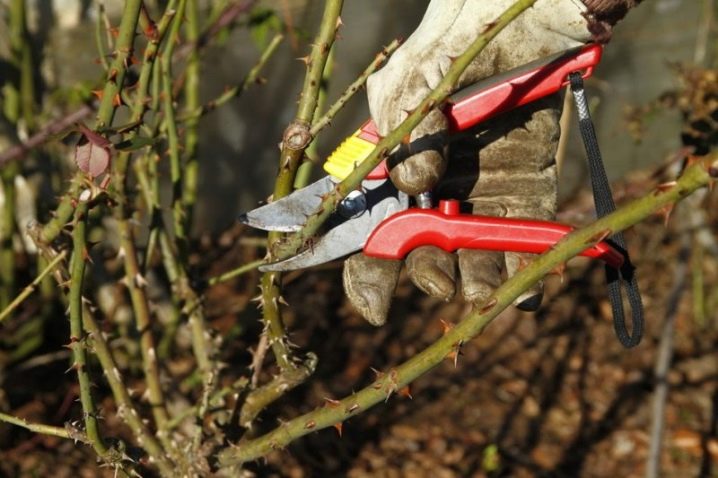
Top dressing
An ornamental plant needs constant feeding throughout the growing season. The most important type of fertilizer in the summer is nitrogen, and at the beginning of autumn, experienced gardeners recommend applying potash and phosphorus fertilizers.
Watering
Regular watering is the main condition for abundant flowering. The amount of water depends on the temperature conditions of the environment and should be increased during dry periods. A thick layer of mulch will significantly slow down the drying out of the soil, and reduce water consumption for irrigation.
To prevent the appearance of burns on plants, experts recommend watering only after sunset.
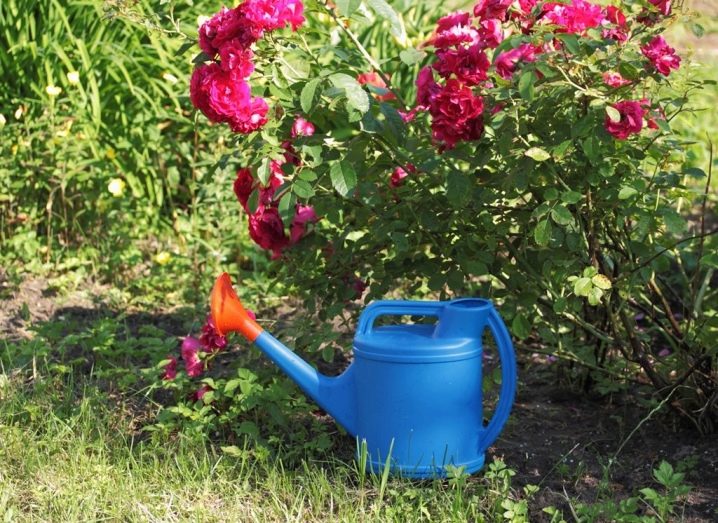
Disease and pest control
Botanists consider aphids, cicadas, spider mites and leafworms to be the most dangerous pests of roses. To combat these insects, it is advisable to use a soap solution with mustard powder and red pepper, as well as special chemicals.
Powdery mildew and black spot occupy the leading positions among the most dangerous diseases of roses. To prevent the appearance of these diseases, carry out regular processing of flower beds with Bordeaux liquid and potassium preparations. At the first signs of the appearance of affected areas, you should treat the plants with a solution of soda.
Preventive pruning can help prevent pests and diseases. Cut off shoots must be taken out of the site and burned.
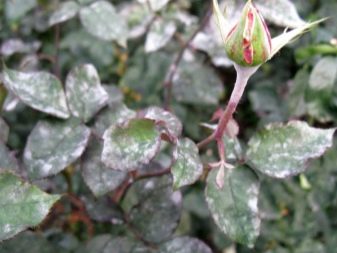
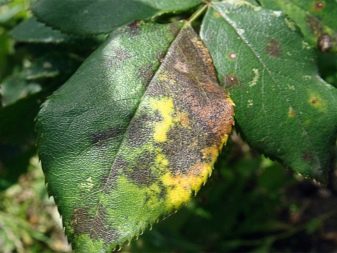
Pruning
Spray rose is an ornamental plant for which regular and timely pruning is of great importance. This manipulation promotes the appearance of young shoots and new buds, and is also a preventive measure in the fight against various dangerous diseases.
Experts recommend pruning several times while removing old foliage and dry branches.
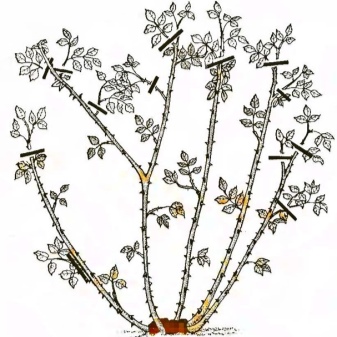
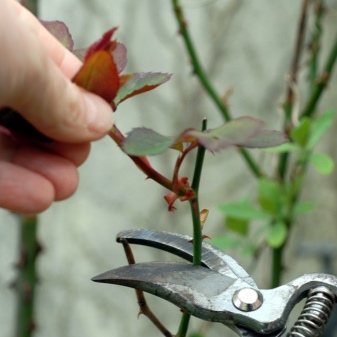
It is necessary to remove not only branches, but also unnecessary dry inflorescences.
A small cut plant will spend the minimum amount of energy and nutrients for the growth of green mass and give the maximum energy to the formation of a large number of bright buds.
Basic rules for correct pruning:
- the use of tools that are treated with disinfectants;
- you need to start pruning from the lower branches;
- processing of cut sites with garden pitch;
- cut angle - 45 degrees.
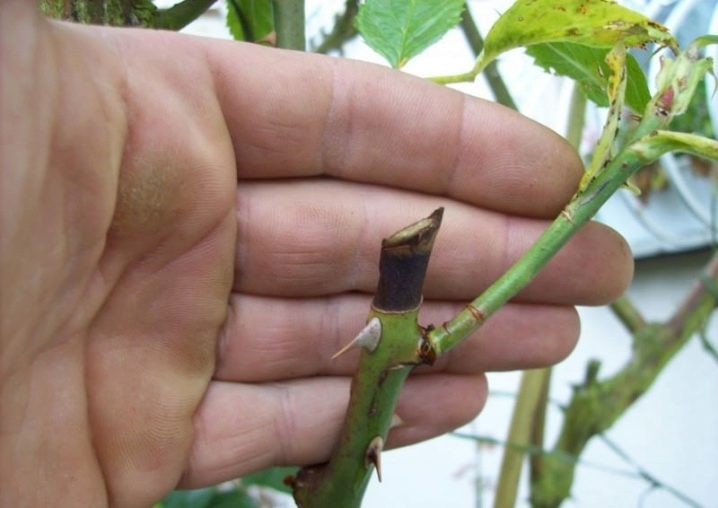
The technology of pruning and forming a bush depends on the variety and characteristics of the selected plant.
How to prepare for winter?
Proper preparation for the winter period is an important factor that will affect the condition of the plant in spring.
Preparation stages:
- removal of dry branches, flowers;
- the formation of an earthen coma;
- creation of a sand embankment;
- covering the site with dry grass or branches.
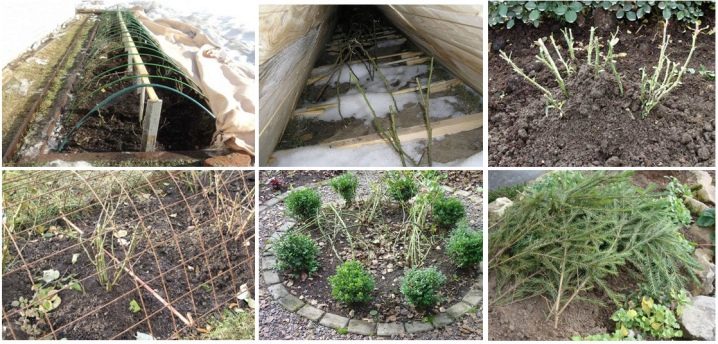
Many gardeners are using a new method of hiding the plant. This method provides for the manufacture of an iron frame 40 cm high above the flower garden. Styrofoam or another type of insulation is attached to the structure. The entire structure should be covered with a dense plastic wrap, the edges of which are fixed with earth and stones. You can ventilate the structure before the onset of severe frosts.
A flower garden is an integral part of every personal plot, which consists of various plants. Flowering plants not only aesthetically decorate the territory, but also give a delicate aroma and good mood.
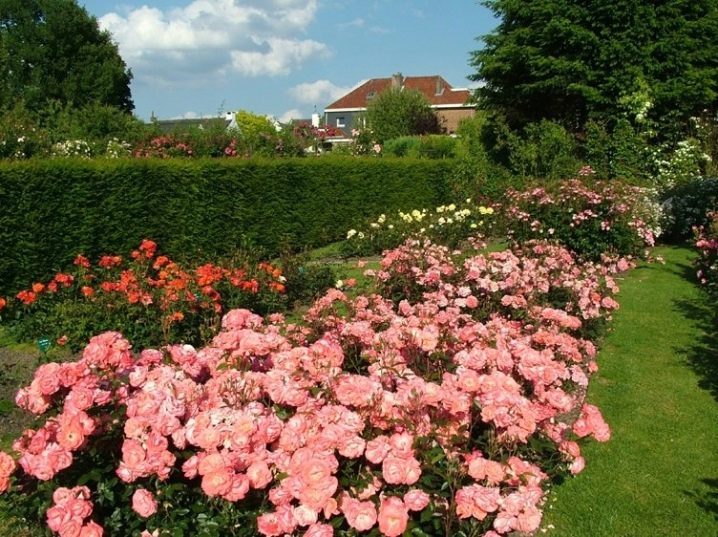
Review and features of rose spray and others bloom, see below.

































































































Thanks! You have the largest list of spray rose varieties I have found on the internet here.
Thank you very much for the professional and detailed article! I would like to know what the lowest temperatures these roses can withstand without shelter.
Tatyana, spray roses without shelter can withstand a short-term drop in temperature to -15 ° C, and the most frost-resistant variety is Canadian, they can withstand a drop in temperature to -40 degrees, up to this temperature they do not require shelter at all for the winter.
Good afternoon. Please tell me I received a package of roses. Is it possible to plant them in open ground now? Isn't it cold for them?
Raisa is of course cold, even for the southern regions. The rose is thermophilic. For regions, seedlings should be planted in open ground only when a steady heat occurs at an average daily air temperature of + 15 ... + 16 ° С, when the soil dries out and warms up to + 10 ... + 12 ° С.
The comment was sent successfully.